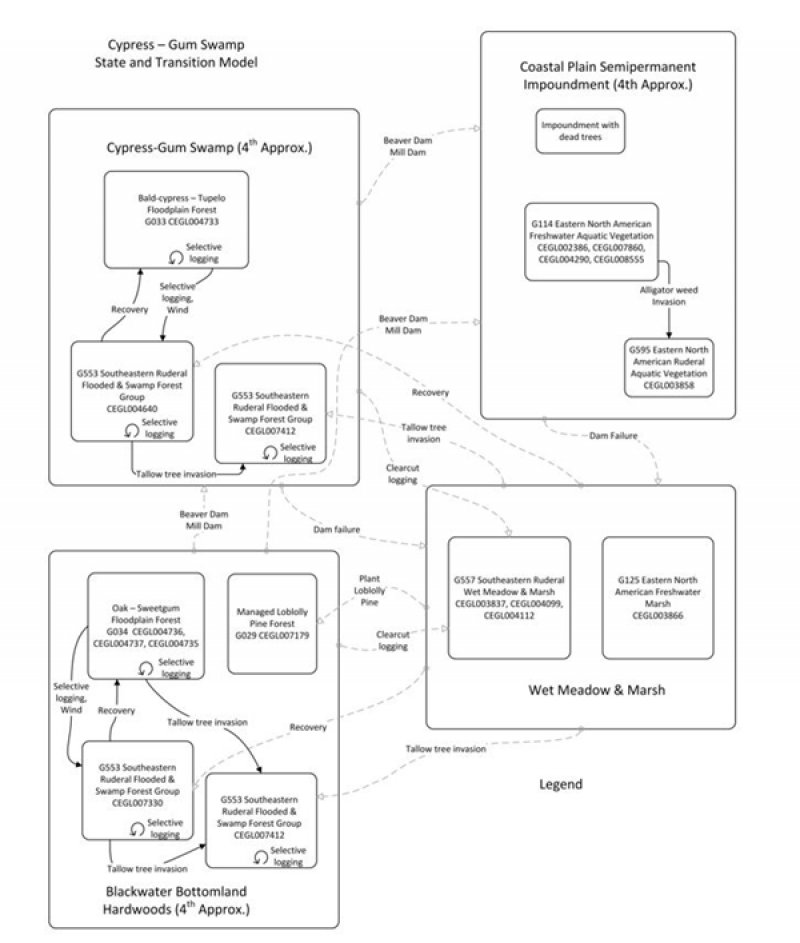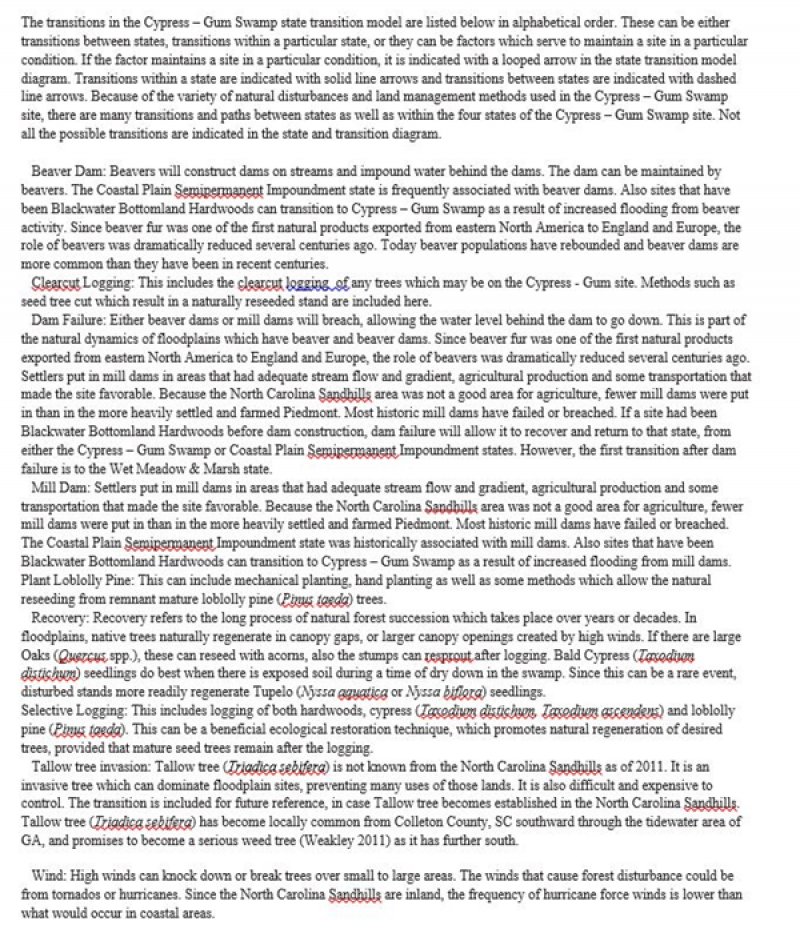
Natural Resources
Conservation Service
Ecological site F133AY005NC
Atlantic Coastal Plain Upland Longleaf Pine Woodland DRY - PROVISIONAL
Accessed: 12/22/2025
General information
Provisional. A provisional ecological site description has undergone quality control and quality assurance review. It contains a working state and transition model and enough information to identify the ecological site.
MLRA notes
Major Land Resource Area (MLRA): 133A–Southern Coastal Plain
This MLRA (shown in orange in the figure above) is in Alabama (26 percent), Mississippi (24 percent), Georgia (21 percent), Florida (8 percent), North Carolina (7 percent), Virginia (5 percent), South Carolina (4 percent), Tennessee (4 percent), and Louisiana (1 percent). It makes up about 106,485 square miles (275,930 square kilometers). It is the largest MLRA in the U.S. The city of Alexandria, Virginia, is at the northernmost tip of the area. The MLRA also includes Fredericksburg, Richmond, and Petersburg, Virginia; Rocky Mount, Goldsboro, Fayetteville, and Lumberton, North Carolina; Florence, Sumter, and Orangeburg, South Carolina; Albany and Tifton, Georgia; Tallahassee, Florida; Tuskegee, Eufaula, Selma, and Tuscaloosa, Alabama; Savannah, Tennessee; Corinth, Starkville, Grenada, Meridian, Hattiesburg, and McComb, Mississippi; and Bogalusa, Louisiana. Interstates 95, 64, 85, 40, 20, 20/59, 26, 16, 75, 10, 65, 59, and 55 cross this area from north to south. This area extends from Virginia to Louisiana and Mississippi, but it is almost entirely within three sections of the Coastal Plain Province of the Atlantic Plain. The northern part is in the Embayed Section, the middle part is in the Sea Island Section, and the southern part is in the East Gulf Coastal Plain Section. This MLRA is strongly dissected into nearly level and gently undulating valleys and gently sloping to steep uplands. Stream valleys generally are narrow in their upper reaches but become broad and have widely meandering stream channels as they approach the coast. Elevation ranges from 80 to 655 feet (25 to 200 meters), increasing gradually from the lower Coastal Plain northward. Local relief is mainly 10 to 20 feet (3 to 6 meters), but it is 80 to 165 feet (25 to 50 meters) in some of the more deeply dissected areas.
Classification relationships
ATTENTION: This ecological site meets the requirements for PROVISIONAL. A provisional ecological site is established after ecological site concepts are developed and an initial state-and-transition model is drafted. A provisional ecological site typically will include literature reviews, land use history information, legacy data, and must include some soils data, ocular estimates for canopy and/or species composition by weight, and some line-point intercept information. A provisional ecological site provides the conceptual framework of soil-site correlation for the development of the ESD. For more information about this ecological site, please contact your local NRCS office.
Ecological site concept
This system of upland Pinus palustris-dominated vegetation ranges from southern Virginia (beginning approximately at
the James River) to northeastern Florida (excluding longleaf pine of the Fall-Line Sandhills, accommodated by another ecological
system), where it was once perhaps the most extensive system in the Outer Coastal Plain within its range. Examples and associations
share the common feature of upland (non-wetland) moisture regimes and natural exposure to frequent fire. They occur on a variety of
well- to excessively drained soils, and on the higher parts of upland-wetland mosaics. The vegetation is naturally dominated by Pinus
palustris. Most associations have an understory of scrub oaks. The herb layer is generally well-developed and dominated by grasses. Aristida stricta primarily dominates in the northern part of its range, and Aristida beyrichiana in the southern part. Frequent, low-intensity fire is the dominant natural ecological force. This system occurs on upland sites of the Middle to Outer Atlantic Coastal Plain, on landforms that include loamy to
sandy flats, relict beach system deposits, eolian sand deposits, Carolina bay rims, and occasional low rolling hills. Soils range from
mesic to xeric and from sandy to loamy or occasionally clayey. Most natural remnants are on coarse sands, but most examples
probably once occurred on loamy soils. Soils are largely acidic and infertile, and the coarsest sands are excessively drained and sterile. The unifying feature of this system is non-wetland sites that naturally supported frequent fire. As such, it once covered much of the landscape of the Coastal Plain. Variations in soil texture and drainage appear to be a primary driver of differences between
associations within the system, with biogeography also important. Descriptions of Ecological Systems for
Modeling of LANDFIRE Biophysical Settings
Ecological Systems
06 October 2007
Descriptions provided to TNC and LANDFIRE by NatureServe
Table 1. Dominant plant species
| Tree |
(1) Pinus palustris |
|---|---|
| Shrub |
Not specified |
| Herbaceous |
(1) Aristida stricta |
Click on box and path labels to scroll to the respective text.

